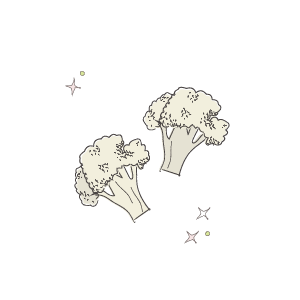Fall Food Guide: Healthy Produce That’s in Season
Purehealthyliving.com is reader – supported. If you click on a link or buy something via a link on this page, we may earn commission.
Written By: Suzanne Kvilhaug
It goes without saying that you can feel a shift happening every season, but the one from summer to fall always feels like the most dramatic. Especially when it comes to anything food-related. Once September begins, eating food off the grill and snacking on watermelon just feels plain wrong. Eating corn on the cob during Christmas time = uncanny. As the seasons change, cravings and daily eating habits do a complete 180, and what to buy vs. what not to buy in the produce section varies.
When it comes to eating produce, eating seasonally is what nature intended. It’s naturally ripened, fresher, and tastes sweeter. If you buy produce that’s been grown under good conditions, it maintains all of its natural nutrients. Even though it’s not always possible, choosing locally sourced produce is ideal. When the produce is in season and locally sourced, traveling expenses and storage aren’t required, so costs are lower --plus it’s more eco-friendly and helps support local farmers.
For many ancient medicinal traditions, seasonal eating is the foundation of optimal health. Choosing food that is in sync with nature is a common-sense approach to eating. It is viewed as a way to adapt to change, maintain a positive state of mind, and help to prevent illness. With each season comes variety, and that means eating different nutrients that your body needs. To see what is in season and available in your area, check out this seasonal guide.
Apples
Fall begins and cue the apple picking, making apple pie, and the apple tree photoshoot. Apples come in many different varieties and it really depends on personal preference. If dessert is your thing, easy-baked cinnamon apples come in clutch with an easy and healthy-to-make recipe. Apples are inexpensive, contain a good amount of fiber, and are a convenient healthy snack. And if you’re wondering where the phrase “an apple a day keeps the doctor away” comes from and what it means, read here.
Leafy greens
Take your pick. Collard greens, kale, and swiss chard are leafy greens that are in season during the fall. Each has its own taste and texture, so rotating them on your grocery list can be beneficial. Leafy greens receive high praise when it comes to nutrition because of their vitamin and mineral content. Greens work great in salads, as healthy sides, and in fresh-pressed juice. Choose greens with fresh, crisp leaves and avoid any that are wilted or slimy.
Butternut Squash
Butternut squash is one of the most popular and widely available forms of winter squash. It’s a staple for many people in the fall, and a healthy one with a long list of health benefits. Butternut squash can be made in many different ways, and if you’re looking to skip the butter that’s in most recipes, use coconut oil instead. It’s an easy way to add flavor and keep it healthy. As for picking the best one in the store, choose squash that is heavy, as it will have a highly developed flavor.
Fresh Dates
One thing that doesn’t change when the seasons do is cravings for something sweet. Dates are harvested between September to December and are a great pick-me-up snack during the fall. One-half cup of dates provides 6 grams of fiber or around 22 percent of the daily value for fiber. Stuff dates with nut butter, or try making a clean and healthy snack like raw cacao energy balls. Dates are considered nature’s candy and are one of the healthiest sweeteners to use in recipes.
Brussels Sprouts
There seems to be no in-between when it comes to brussels sprouts, people either love them or hate them. I was shocked at how good brussels sprouts were when I first tried them because of their bad rap. Was not expecting that! By far, they are one of the most interesting vegetables and they have a lot of health benefits. If you’re pro brussels sprouts or want to give them a try (drop the fear, it’s a myth!), peak season begins in September. And for the newbies, here’s how to choose, store and prepare brussels sprouts.
Sweet Potatoes
Available year-round with peak season starting in October, sweet potatoes are like fall’s food mascot. Sweet potatoes are high in vitamin A, vitamin C and magnesium. There are so many different healthy sweet potato recipes, you can never run out of ideas. If you’re into smoothies and haven’t tried one yet, consider making a sweet potato smoothie. When you are picking out sweet potatoes, look for intact skin without cracks or soft spots.
Cauliflower
Considered a superfood, cauliflower is available year-round, but its peak season is the fall. Cauliflower is one of the most versatile vegetables, it can be boiled, roasted, steamed or fried. Cauliflower pizza crust, anyone? It’s healthy, tastes good and is the perfect way to make a gluten-free pizza. What about cauliflower rice? Or if you are looking to wow dinner guests (or yourself), consider making meatless buffalo cauliflower wings one night.
Beets
A root vegetable that is harvested in the fall, beets have become a trendy superfood over the past few years. Beets are great in salads, fall recipes and ideal for juicing at home. New to beets and not sure how to peel and juice them? Here’s how. When buying beets, look for dense, firm beets with tight skin and don't worry about any rough patches. Add ginger, lemon and carrots for a well-rounded, sweet and healthy juice.
More Articles You Might Like

















